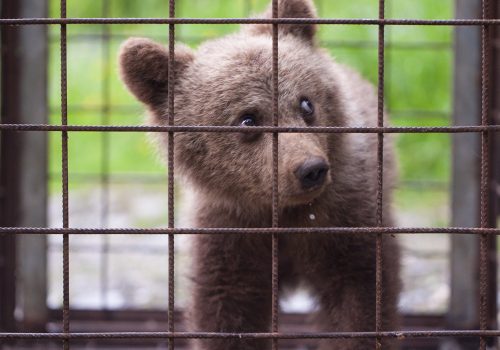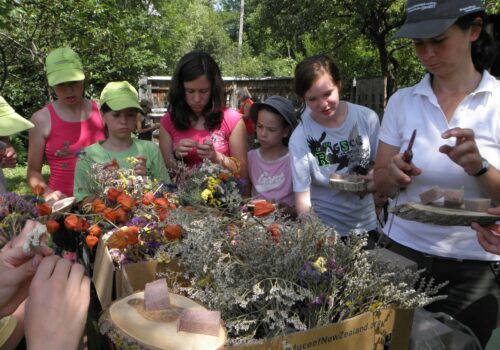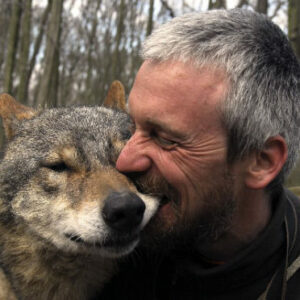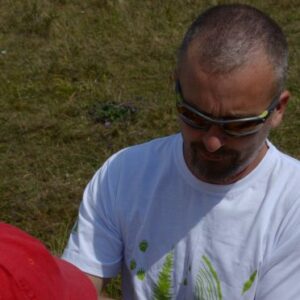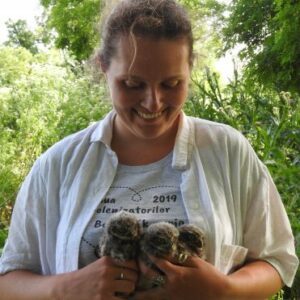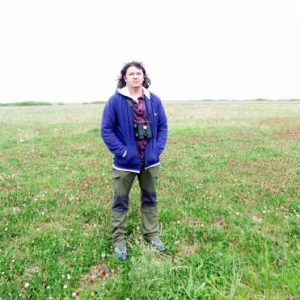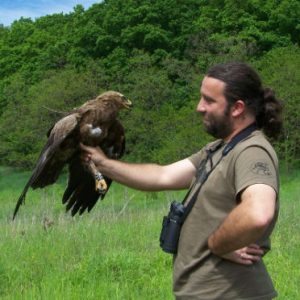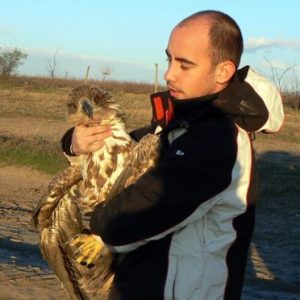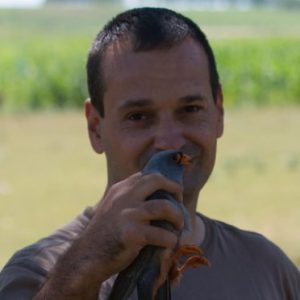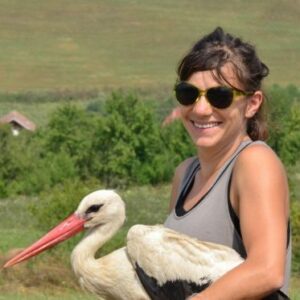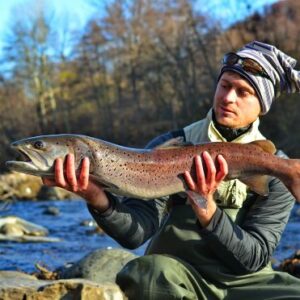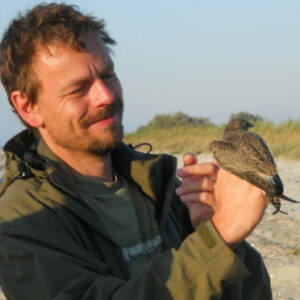
As one of the main threats to far-roaming brown bears is the degradation, fragmentation and loss of suitable habitats, one of the goals of the project ‘Brown bear conservation and research in a model area in Romania’ is to conserve the bears’ habitat. In the area where the project operates, the most significant threat in this sense in the nearby future will be posed by the planned Tg. Mures-Iasi-Ungheni highway. This development will cut through Romania’s Eastern Carpathians and adjacent foothills, all prime bear habitats.
Without proper mitigation measures in place (e.g. green bridges, tunnels and viaducts built on purpose), the future highway will divide the bear population and block bears from reaching critical feeding and denning habitats. Starting with 2011, we are collecting scientific data that will allow the planning and implementation of suitable mitigation measures, to prevent adverse effects of fragmentation. Although we mainly focus on the Tg. Mures-Ditrau section, since 2014 we are also working on the Ditrău-Tg. Neamt section of the planned highway. On this 120 km long section we use two complementary methods to gather data: in 2014 we have performed the first hair trapping survey along the planned highway, whereas in 2015 we have carried out a tracking survey along the planned route. Our goal is to identify crucial ecological corridors the highway is intersecting.

The 2
nd repetition of the hair trapping survey along the planned highway was carried out in the period July 4 – August 1, 2017. The hair traps were mounted in pre-established locations, in pairs on both sides of the future highway. It took us a total of 12 fieldwork days (July 4-15) to mount the traps, respectively another 12 days (July 21 – August 1) to check and dismount the structures. The traps consisted of a single strand of barbed wire, mounted at a height of approximately 50 cm, to delimit an area of a few square meters. In the middle of the area surrounded by the barbed wire we have constructed a small pile from branches and rocks, onto which we poured 0.5 l of bait / hair trap. As bait we used cattle blood mixed with rotting ocean fish, a mixture that has been ‘matured’ for almost 2 years. The hair trap works in a simple way: as bears climb over (or under) the barbed wire to investigate the source of the smell, they leave a few pieces of hair on the barbs. The hair samples are later collected for genetic analysis.
From the originally planned 74 locations, 6 were excluded from the study: 5 were sites with shepherd camps, while 1 was located in the middle of a pasture, next to the drinking trough used by a cattle herd. As a result, just as in 2014, a total of 68 hair traps were active for 17 days each, adding up to a total of 1156 trapping days (none of the mounted snags were taken off by locals). A total of 59 bear hair samples were collected from 25 different traps. The samples will undergo genetic analysis performed by our long-time partners, the Conservation Genetics Group from the Senckenberg Research Institute (Germany).
The 3
rd and final repetition of the hair trapping survey will be carried out in 2020, completing our final dataset on bear ecological corridors across the planned highway, in the Ditrau-Tg. Neamt section. This data is also used in the “TRANSGREEN – Integrated Infrastructure Planning in the Danube-Carpathian Region for the benefit of people and Nature,”
 As one of the main threats to far-roaming brown bears is the degradation, fragmentation and loss of suitable habitats, one of the goals of the project ‘Brown bear conservation and research in a model area in Romania’ is to conserve the bears’ habitat. In the area where the project operates, the most significant threat in this sense in the nearby future will be posed by the planned Tg. Mures-Iasi-Ungheni highway. This development will cut through Romania’s Eastern Carpathians and adjacent foothills, all prime bear habitats. Without proper mitigation measures in place (e.g. green bridges, tunnels and viaducts built on purpose), the future highway will divide the bear population and block bears from reaching critical feeding and denning habitats. Starting with 2011, we are collecting scientific data that will allow the planning and implementation of suitable mitigation measures, to prevent adverse effects of fragmentation. Although we mainly focus on the Tg. Mures-Ditrau section, since 2014 we are also working on the Ditrău-Tg. Neamt section of the planned highway. On this 120 km long section we use two complementary methods to gather data: in 2014 we have performed the first hair trapping survey along the planned highway, whereas in 2015 we have carried out a tracking survey along the planned route. Our goal is to identify crucial ecological corridors the highway is intersecting.
As one of the main threats to far-roaming brown bears is the degradation, fragmentation and loss of suitable habitats, one of the goals of the project ‘Brown bear conservation and research in a model area in Romania’ is to conserve the bears’ habitat. In the area where the project operates, the most significant threat in this sense in the nearby future will be posed by the planned Tg. Mures-Iasi-Ungheni highway. This development will cut through Romania’s Eastern Carpathians and adjacent foothills, all prime bear habitats. Without proper mitigation measures in place (e.g. green bridges, tunnels and viaducts built on purpose), the future highway will divide the bear population and block bears from reaching critical feeding and denning habitats. Starting with 2011, we are collecting scientific data that will allow the planning and implementation of suitable mitigation measures, to prevent adverse effects of fragmentation. Although we mainly focus on the Tg. Mures-Ditrau section, since 2014 we are also working on the Ditrău-Tg. Neamt section of the planned highway. On this 120 km long section we use two complementary methods to gather data: in 2014 we have performed the first hair trapping survey along the planned highway, whereas in 2015 we have carried out a tracking survey along the planned route. Our goal is to identify crucial ecological corridors the highway is intersecting.
 The 2nd repetition of the hair trapping survey along the planned highway was carried out in the period July 4 – August 1, 2017. The hair traps were mounted in pre-established locations, in pairs on both sides of the future highway. It took us a total of 12 fieldwork days (July 4-15) to mount the traps, respectively another 12 days (July 21 – August 1) to check and dismount the structures. The traps consisted of a single strand of barbed wire, mounted at a height of approximately 50 cm, to delimit an area of a few square meters. In the middle of the area surrounded by the barbed wire we have constructed a small pile from branches and rocks, onto which we poured 0.5 l of bait / hair trap. As bait we used cattle blood mixed with rotting ocean fish, a mixture that has been ‘matured’ for almost 2 years. The hair trap works in a simple way: as bears climb over (or under) the barbed wire to investigate the source of the smell, they leave a few pieces of hair on the barbs. The hair samples are later collected for genetic analysis.
From the originally planned 74 locations, 6 were excluded from the study: 5 were sites with shepherd camps, while 1 was located in the middle of a pasture, next to the drinking trough used by a cattle herd. As a result, just as in 2014, a total of 68 hair traps were active for 17 days each, adding up to a total of 1156 trapping days (none of the mounted snags were taken off by locals). A total of 59 bear hair samples were collected from 25 different traps. The samples will undergo genetic analysis performed by our long-time partners, the Conservation Genetics Group from the Senckenberg Research Institute (Germany).
The 3rd and final repetition of the hair trapping survey will be carried out in 2020, completing our final dataset on bear ecological corridors across the planned highway, in the Ditrau-Tg. Neamt section. This data is also used in the “TRANSGREEN – Integrated Infrastructure Planning in the Danube-Carpathian Region for the benefit of people and Nature,”
The 2nd repetition of the hair trapping survey along the planned highway was carried out in the period July 4 – August 1, 2017. The hair traps were mounted in pre-established locations, in pairs on both sides of the future highway. It took us a total of 12 fieldwork days (July 4-15) to mount the traps, respectively another 12 days (July 21 – August 1) to check and dismount the structures. The traps consisted of a single strand of barbed wire, mounted at a height of approximately 50 cm, to delimit an area of a few square meters. In the middle of the area surrounded by the barbed wire we have constructed a small pile from branches and rocks, onto which we poured 0.5 l of bait / hair trap. As bait we used cattle blood mixed with rotting ocean fish, a mixture that has been ‘matured’ for almost 2 years. The hair trap works in a simple way: as bears climb over (or under) the barbed wire to investigate the source of the smell, they leave a few pieces of hair on the barbs. The hair samples are later collected for genetic analysis.
From the originally planned 74 locations, 6 were excluded from the study: 5 were sites with shepherd camps, while 1 was located in the middle of a pasture, next to the drinking trough used by a cattle herd. As a result, just as in 2014, a total of 68 hair traps were active for 17 days each, adding up to a total of 1156 trapping days (none of the mounted snags were taken off by locals). A total of 59 bear hair samples were collected from 25 different traps. The samples will undergo genetic analysis performed by our long-time partners, the Conservation Genetics Group from the Senckenberg Research Institute (Germany).
The 3rd and final repetition of the hair trapping survey will be carried out in 2020, completing our final dataset on bear ecological corridors across the planned highway, in the Ditrau-Tg. Neamt section. This data is also used in the “TRANSGREEN – Integrated Infrastructure Planning in the Danube-Carpathian Region for the benefit of people and Nature,”


